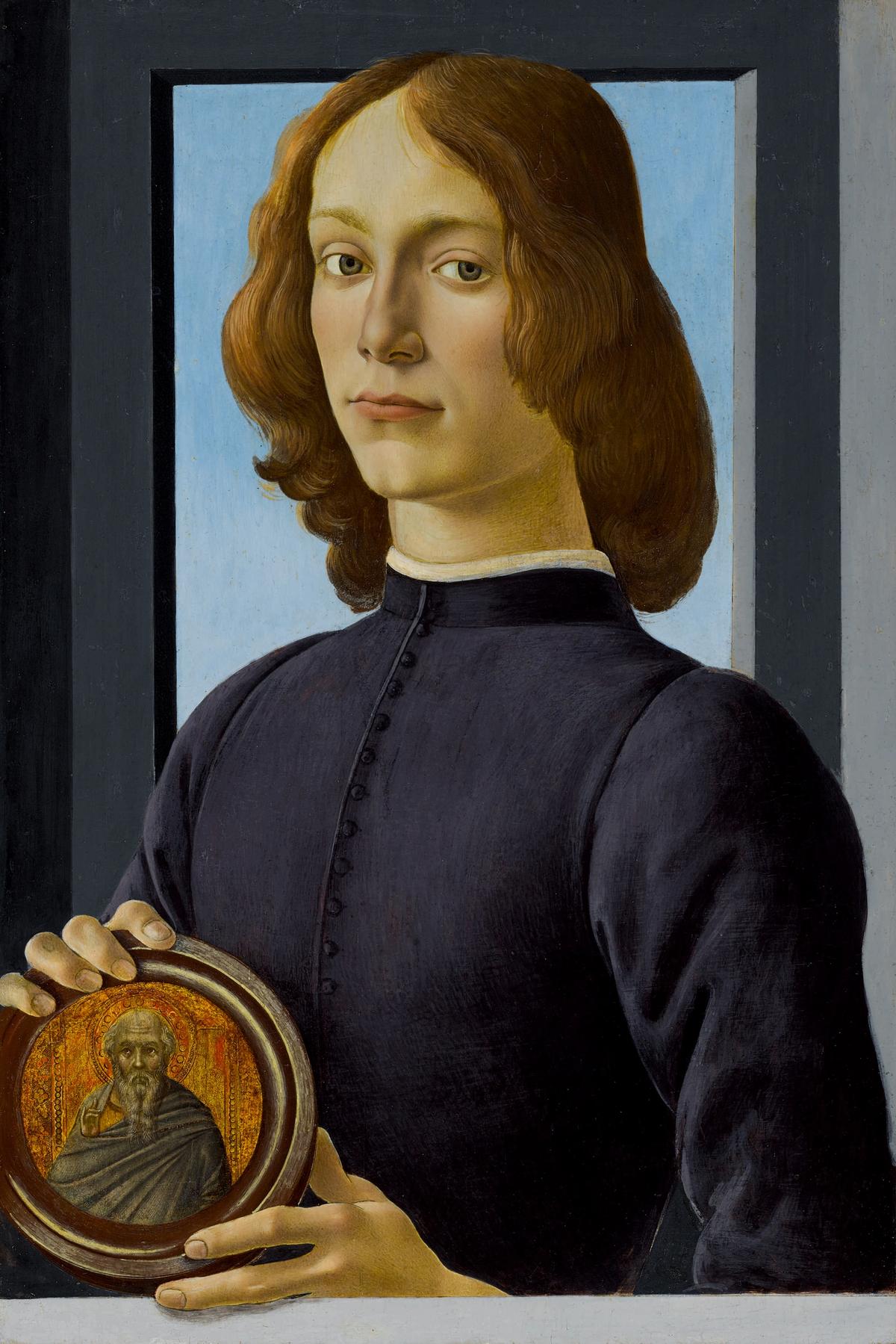A portrait of a Young man holding a roundel (around 1470-80) by Sandro Botticelli is to be auctioned in New York in January, when it is estimated to sell for in excess of $80m during Sotheby's Masters Week series of sales.
“I’ve been selling Old Master paintings for three decades and it’s unusual to get a picture that is so evocative and in such exquisite condition,” says Christopher Apostle, the head of Sotheby’s Old Master paintings department, adding that its singularity is reflected in the price.
The work has been in private hands for over a century, though it has been on display in various long-term museum exhibitions consistently over the last three decades, most recently at the Metropolitan Museum of Art in New York, the National Gallery of Art in Washington, DC, and the National Gallery in London. First recorded in the 1930s in the collection of Lord Newborough at Caernarfon in Wales, the portrait is believed to have been acquired by his ancestor Sir Thomas Wynn, the first Lord Newborough (1736-1807), while he was living in Tuscany. Between 1935 and 1938, the portrait changed hands through a London dealer to a private collector, whose heirs sold it at auction in 1982 to its present owner for £810,000.
Remembered for his allegorical paintings, such as the Primavera tableau and The Birth of Venus, both in the Uffizi Gallery in Italy, portraits are relatively rare within the Florentine master’s corpus. “Only a dozen portraits that we know of survive,” Apostle says. Three of those are in private hands, while the rest are housed in museums. Indeed, the quality of Young man holding a roundel is comparable to Portrait of a young man with the medal of Cosimo de’ Medici at the Uffizi and Portrait of Giuliano de’ Medici at the National Gallery in Washington, DC, according to Apostle. All of these paintings are believed to have been executed around the same time, between the mid-1470s and early 1480s.
What sets this portrait apart is its pared-down composition. “When we think of the illusionism of the High Renaissance—complex architectural forms, geographic linearity and two-point perspective, along with vibrant colours—all of those elements are present in this work,” Apostle says. “Even though nine out of ten people on the street might be able to name Botticelli as one of the great artists of the Western canon, he is really due more credit for perfecting these compositional aspects within the context of art history.”
Apostle points to the artist’s subtle gesture of positioning the sitter’s finger over the ledge of the window in which he is pictured, the only place where a slight shadow is evident: “It’s very subtle but also very intentional. It offers insight to the psychology of the subject, something that simply wasn’t of interest to a previous generation of portraitists.”
The current auction record for Botticelli’s work was set in 2013, when the so-called “Rockefeller Madonna” (or Madonna and Child with Young Saint John the Baptist) sold for $10.4m. Yet a portrait believed to be the last painting by Botticelli still in private hands was offered for $30m by Trinity Fine Art at the Frieze Masters fair in London in October 2019—although it did not sell at the fair. A later picture (painted around 1500) of an older sitter, the portrait was in not such good condition and had been on loan to the Prado, Madrid, for roughly 12 years.
The $80m estimate for Young man holding a roundel, should it reach it, makes it one of the most expensive portraits of any period ever to appear at auction, on a level with Gustav Klimt’s Portrait of Adele Bloch-Bauer II, sold in 2006 for $87.9m, and Vincent Van Gogh’s Portrait of Dr Gachet, sold in 1990 for $82.5m.
The work will be on view in London in December and then at Sotheby’s in New York until the sale, which is planned to be held in the hybrid live-streamed online format recently pioneered by the auction house during the coronavirus pandemic.


